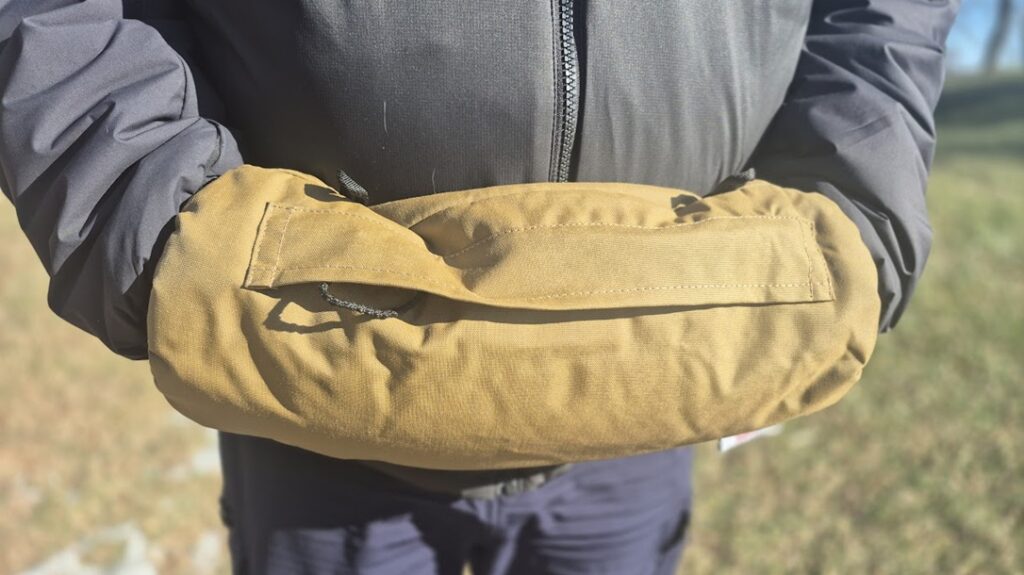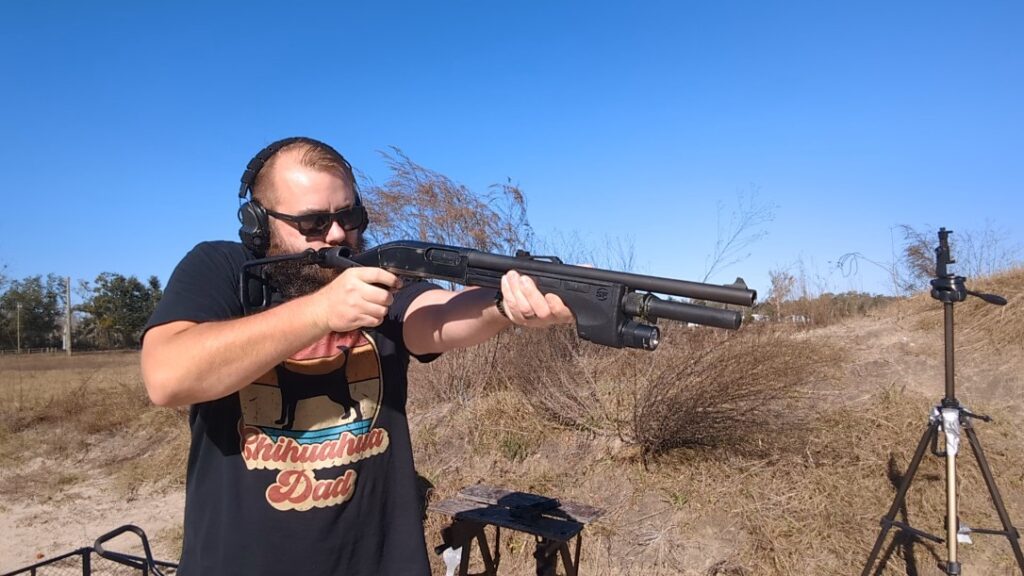I’ve learned something new today, readers. I have learned that we should listen with rapt attention to the opinion of anyone who holds the title doctor. They are the wizened and learned ones from which only good advice can ever flow.
“Even if that doctor is speaking well outside their field of expertise?”, you may ask.
Well… Yeah, no.
Advertisement — Continue Reading Below
Paul Manganiello: Gun legislation needs action this session
This lovely piece of… well, something… comes from Vermont and Dr. Paul Manganiello. Dr. Manganiello is an emeritus professor of obstetrics and gynecology. His expertise is women’s reproductive organs and child birth, so now let him speak on violence in society and why guns are bad.
In its last session, the Democratic Legislature failed to get any significant legislation passed addressing the issue of firearms and public safety. The only bill, attempting to reduce the risk of suicide by gun, that was submitted to Gov. Phil Scott would have imposed a 24-hour waiting period before the purchase of a handgun. The governor claimed that such legislation would be ineffective and sent it back to the Legislature. The governor also claimed that he wouldn’t be averse to signing firearm legislation if he thought that the legislation would be effective. We need to take him at his word.
I don’t believe any Governor would be averse to signing effective legislation. We just have very different ideas of what the word ‘effective’ means under these circumstances. Gun Control proponents have consistently held that effective means ‘sounds good’. With only vague evidentiary backing at best and the briefest, nearly insubstantial, regard for an individual’s rights.
Advertisement — Continue Reading Below
However, I am not a gynecologist so what could I possibly know?
Death as an endpoint is only part of the story of suicide. In 2017, the most recent year for which we have data, there were 112 deaths by suicide in Vermont. More than 60% of those deaths — 66 — were firearm-related; there were approximately 1,100 injuries from attempted suicides. Firearms were responsible for only 1% of these reported self-inflicted non-fatal injuries, i.e., poisoning, cutting, suffocation, etc. Due to the inherent lethality of firearms, those who chose suicide by firearm rarely have a second chance.
Ah, guns are bad because firearm suicides are more likely to succeed. 66 suicides and 11 attempts with the method being firearm. Yet we are dismissing over 1,000 other individuals who tried to take their lives or succeeded. And we’re doing it because their suicides were safer, less effective, resulted in fewer successes. We’ve co opted the individual mental anguish of these people and are almost congratulating them because at least they didn’t use a gun.
Advertisement — Continue Reading Below
I find it fascinating that, despite the prevalence of firearms in the nation and their alleged ease of acquisition, only 6% of suicides and attempts were made with a firearm by Dr. Manganiello’s stated numbers. Given the stated effectiveness rate of 86%, I would expect a higher percentage of method.
But given we know that suicide rates are independent of method and that the motivations for taking one’s own life are a complicated amalgamation of stresses and anguish, usually with a final triggering stress, it is not something to be overly summarized.
Suicide occurs along the entire life spectrum. Interventions to reduce the incidence of suicide by gun needs to be targeted and comprehensive if we hope to have any meaningful impact.
Advertisement — Continue Reading Below
Agreed, in a sense. Tracking suicide by age group yields a dataset that is varied as the age bracket we are looking at. Suicides start increasing as brain development increases so we see a jump in instances starting in the teens and then we see motivations shift throughout the periods of life. Suicide is complex. Yet interventions to reduce suicide by gun, which accounts for only 6% of attempts and incidents must, be “targeted and comprehensive”…
Those are fine buzz words but what are you talking about specifically, Doctor?
If you are trying to have an impact on risk reduction for those under the age of 21, when it is illegal to purchase a firearm, waiting periods to purchase a firearm will be irrelevant. This is also the case for individuals who are over the age of 21 and who already have a firearm accessible to them. The duration of a waiting period is also crucial. Suicide is oftentimes impulsive, and studies have shown that a 72-hour waiting period in an acute crisis allows more time for the at-risk individual to receive needed help. Waiting 72 hours to take ownership of a firearm should not be seen as a hardship, but a public health benefit.
Advertisement — Continue Reading Below
Wait… you just said, in so many words, waiting periods are bullshit. They have no influence on the under 21 group or the over 21 group with any form of access. But then go on and say we need a 72 hour waiting period in acute crisis so a 72 hour wait on firearms purchases “should not be seen as a hardship…”
So it doesn’t work but let’s do it? How many of those 66 deaths purchased their firearm within 72 hours of their suicide? Why will burdening the whole population, some of which have their lives immediately under threat of violence, with this delay work? That does not sounded “targeted and comprehensive” at all. What tangible improvement will it grant for the harm it can cause? Who among those 66 would this rule have saved and who could it have harmed?
Harder question isn’t it.
Advertisement — Continue Reading Below
Our legislators need to enact legislation that addresses the whole of life’s spectrum as it relates to suicide. We can look to other states for best practices. For those under the age of 21, a child access prevention law; for those over the age of 21 wanting to purchase a firearm, a 72-hour waiting period; and for those who already have access to a firearm, a strong extreme risk protection order. All three have been shown to be effective at reducing death by suicide.
I notice he says death by suicide and not death by firearm suicide, which leads me to the theory he was looking at bracketed information. States with these rules happened to have overall reductions in their suicide rate. But when looked at more in depth, these rules fail to establish causation and the rates don’t drift outside normal variances when all influencing factors are considered.
Last year I testified at the Senate Judiciary Committee’s public hearing in Randolph. There seemed to be misconceptions voiced surrounding child access prevention laws. In those states that have strong CAP laws, criminal liability only occurs to the owner of the firearm when someone is injured or killed as a result of the firearm not being properly secured (locked and unloaded). Police cannot perform random checks on the homes of gun owners to make sure that a firearm is secured. The law doesn’t forbid a gun owner from carrying a loaded firearm, it is only when a mishap occurs and the firearm is not in the possession of the owner and the firearm hasn’t been safely secured, that criminal liability is a possibility.
Advertisement — Continue Reading Below
Again I must ask, of those 66 suicides which one(s) would have been influenced? Which had someone who was negligent and would have been criminally negligent under such laws. Would that law have reasonably altered those circumstances? This feels like a convoluted form of victim blaming to be honest. That man or that woman’s son or daughter commited suicide, off to jail with you. Should we place equal liability on other dangerous substances and devices likely to be used in a suicide attempt to cover more ground?
At that same hearing, some voiced opposition to the waiting period legislation, since it might prevent an individual who feared for their life by an intruder from being able to obtain a firearm for personal protection. On the surface that might seem like a real “protection” but a person who is inexperienced in handling a firearm is statistically more at risk of injuring himself or herself, or a family member. In Vermont, you are not allowed to hunt without a license, which requires proof of completing a gun safety course, why would anyone want to have a gun in the house without becoming proficient in how to use it? You should purchase a firearm when you are calm and not during a crisis. For self-protection, you need to know how to handle a weapon safely.
That hunting license is for tracking and regulating the harvest of game in the state, good try though.
Advertisement — Continue Reading Below
On the surface it is a real protection. Firearms save lives daily at much greater numbers than they take. Can you assure those allegedly novice persons that they are safer without the firearm? How about if they voluntarily learn about the firearm while they purchase it, are they now exempt from waiting?
What authority are you on a defensive device that is designed to be simple to use properly during person under duresses need? Can you assure law enforcement will intervene in a timely manner and prevent the threat? No? Then let’s stop speculating ourselves into circles of bad outcomes when good ones exist too and occur on the regular.
You can no more predict the good or bad outcome of an individual purchasing a firearm than I can, but based on the number of people who buy a firearm for protection vs. number of accidents due to mishandling I’ll hazard favorable odds to a positive outcome.
Attempts at suicide reduction have nothing to do with the Second Amendment but everything to do with our public health. Contact you Vermont state representatives and senators asking them to pass effective, meaningful and comprehensive legislation which will address a realistic approach to suicide reduction. Come to the Vermont Statehouse Jan. 29 to support decreasing access to lethal means on Mental Health Advocacy Day, beginning at 8:30 a.m.
Brilliant deflection, just state it has nothing to do with the Second Amendment and *poof* it is so. Marginalize the complexity of this topic so that your solutions can be termed ‘common sense’ and it is so.
I don’t want to diminish anyones efforts in reducing both suicides and homicides. I don’t want efforts to reduce violence to be kept from getting their due. But there is a drastic difference between efforts and effective efforts. Don’t diminish the complexity of the problems to make their solutions sound better.
That is something I believe the firearm community does well. Guns aren’t magic talismans, they give you a tool and a chance to sway odds in an emergency situation. It’s like a first aid kit, fire extinguisher, or a spare tire. It’s not for every situation but in the circumstances it can help, it does so immensely.
But, again. What do I know… I am not a gynecologist.















